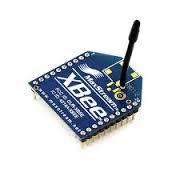Platform
The deployed platform mainly includes the following hardware:- Atmega2560 devices
- These devices use IEE802.15.4 communications based on XBee module.
- The multimedia devices are equipped with
Serial Jpeg camera.

- For development purposes, this integration makes easier the development task especially for large scale testbed. For instance, firmware update of IoT-LAB nodes is done remotely either by a simple click in the portal web or via SSH frontend using the developed software tools. Adapting these features to TILAS nodes avoids us to flash nodes one by one manually.
- The multi-hop scenarios setting is a not a trivial task in practice and it is a huge time consuming in the development process. Rocquencourt platform constitutes a multi-hop network. Hence, getting the multi-hop scenario is immediate once the TILAS nodes are connected to IoT-LAB nodes.
- TILAS nodes could be open for all users like IoT-LAB nodes. This enables the knowledge sharing, and platforms of TILAS project with users which gives this project a very high visibility.


Integration in FIT IoT-LAB
The prototype is integrated in the experimental platform FIT IoT-LAB platform, in particular in Rocquencourt platform
FIT IoT-LAB platform
FIT IoT-LAB test bed provides a very large scale infrastructure facility suitable for testing small wireless sensor devices and heterogeneous communicating objects via Internet. This infrastructure consists in six large-scale Internet of Things test beds in France with over 2700 wireless sensor nodes in a variety of topologies and environments, and both fixed and mobile nodes. It is open for scientific and experimental usage. The platform can be accessed through a web portal or using provided Linux commands (CLI tools). In addition, the platform offers a hosted environment on SSH front-ends, featuring pre-installed CLI Tools, target architectures cross-compiler toolchains, experiments results, and access to devices serial ports.The advantages of the integration of the TILAS platform in FIT IoT-LAB Rocquencourt platform are multiple:
Plan of the realised testbed
Here is the plan of the deployed Arduino nodes. Red nodes are nodes with cameras, while green nodes are nodes without cameras.